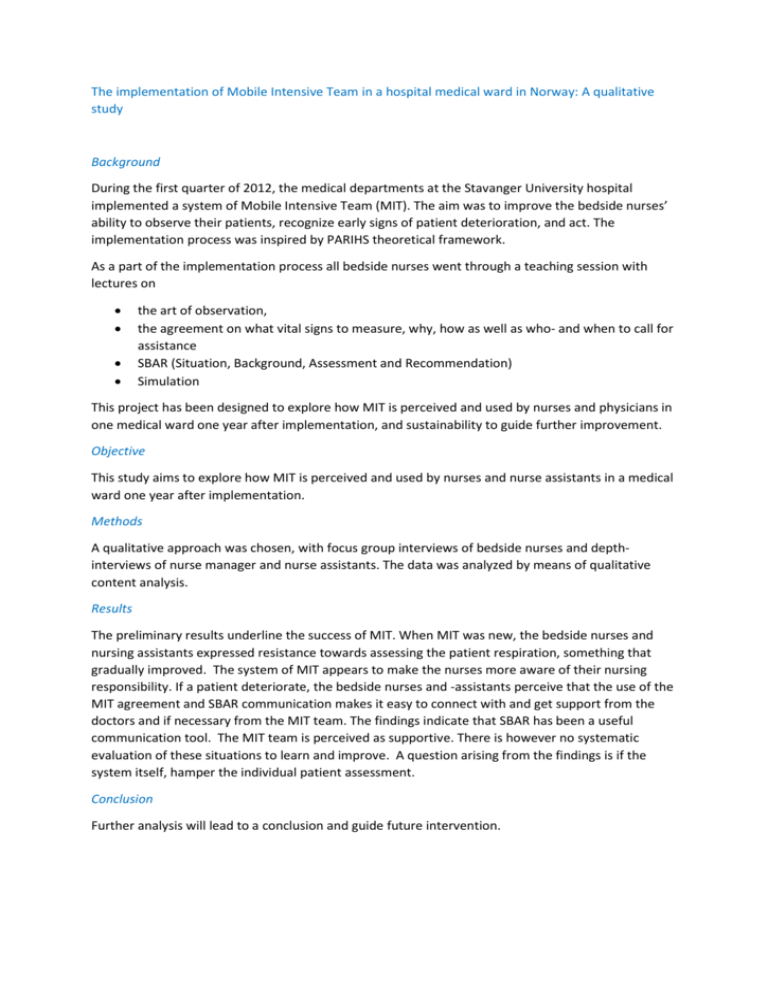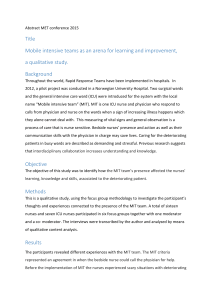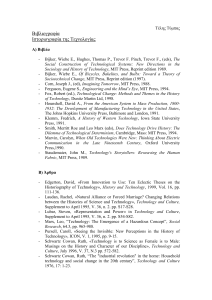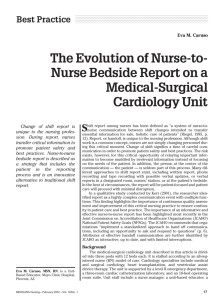The implementation of Mobile Intensive Team in a hospital medical
advertisement

The implementation of Mobile Intensive Team in a hospital medical ward in Norway: A qualitative study Background During the first quarter of 2012, the medical departments at the Stavanger University hospital implemented a system of Mobile Intensive Team (MIT). The aim was to improve the bedside nurses’ ability to observe their patients, recognize early signs of patient deterioration, and act. The implementation process was inspired by PARIHS theoretical framework. As a part of the implementation process all bedside nurses went through a teaching session with lectures on the art of observation, the agreement on what vital signs to measure, why, how as well as who- and when to call for assistance SBAR (Situation, Background, Assessment and Recommendation) Simulation This project has been designed to explore how MIT is perceived and used by nurses and physicians in one medical ward one year after implementation, and sustainability to guide further improvement. Objective This study aims to explore how MIT is perceived and used by nurses and nurse assistants in a medical ward one year after implementation. Methods A qualitative approach was chosen, with focus group interviews of bedside nurses and depthinterviews of nurse manager and nurse assistants. The data was analyzed by means of qualitative content analysis. Results The preliminary results underline the success of MIT. When MIT was new, the bedside nurses and nursing assistants expressed resistance towards assessing the patient respiration, something that gradually improved. The system of MIT appears to make the nurses more aware of their nursing responsibility. If a patient deteriorate, the bedside nurses and -assistants perceive that the use of the MIT agreement and SBAR communication makes it easy to connect with and get support from the doctors and if necessary from the MIT team. The findings indicate that SBAR has been a useful communication tool. The MIT team is perceived as supportive. There is however no systematic evaluation of these situations to learn and improve. A question arising from the findings is if the system itself, hamper the individual patient assessment. Conclusion Further analysis will lead to a conclusion and guide future intervention.









